#whmeme
Text


funny conversations with our husband
#wally darling welcome home#welcome home#welcome home oc#welcome home meme#whmeme#fandom#my art#wally darling
13 notes
·
View notes
Photo






(OTTOMAN) WOMEN’S HISTORY MEME | 5 princesses: Mihrimah Sultan, daughter of Süleyman I
Following in her mother’s footsteps, Mihrumah acted as Suleyman’s intimate counselor and sent him news and forwarded letters when he was away from the capital. She was instrumental in the decision to undertake the siege of the Mediterranean island of Malta in 1565, for which she offered to outfit four hundred galleys. It was in these years that Mihrumah worked with the royal architect Sinan on two of Istanbul’s most exquisite mosques, one in Rustem’s memory in a busy market neighborhood near the Golden Horn and the other in her own name at the Adrianople gate in the old Byzantine city wall. — Leslie Peirce, Empress of the East: How a European Slave Girl Became Queen of the Ottoman Empire
453 notes
·
View notes
Photo






(OTTOMAN) WOMEN’S HISTORY MEME | 5 Kadınefendis: Hacıye Hoşyar Kadın, consort of Mahmud II
The few days I had passed in the society of the Sultan resulted in my eventually giving birth to a daughter, Merimah-Sultan. When the time came to get her a husband, I resolved that she should make her choice. I showed her the portraits of several young men, each worthy of her hand. She fixed upon Said-Pasha. Very few months had elapsed, when my poor daughter, already enceinte, died, and with her my last solace disappeared. — Hoşyar Kadın in Melek Hanım, Thirty Years in the Harem: or, the Autobiography
164 notes
·
View notes
Photo






(OTTOMAN) WOMEN’S HISTORY MEME | 5 royal mothers: Mahidevran, mother of Şehzade Mustafa
Wherever he was, Mustafa was accompanied by his mother Mahidevran. Like Roxelana and countless others, Mahidevran had begun her career in enslavement and conversion to Islam. Her Ottoman name meant “moon of good fortune.” But unlike Roxelana, whose Ruthenian origins were a matter of consensus, Mahidevran’s roots were less certain. She was variously said to be from Albania, Montenegro, Circassia, or the Crimea. Perhaps opportunistically, Venetian ambassadors in the 1520s asserted her Albanian and Montenegrin identities, with the implication that she had been abducted from Venetian-controlled territory on the eastern Adriatic coast (it could be useful if an ex-national rose to the top ranks of power). But in the 1550s, consensus on Mahidevran’s origins would shift to the Black Sea region. The Hapsburg ambassador Ogier Ghiselin de Busbecq reported that she was Crimean and the Venetian Bernardo Navagero that she was Circassian.
Mustafa must have been Mahidevran’s first (and only) child, for she appears to have had no daughters. “Her whole pleasure is this [child],” commented Bragadin in his brief mention of her. When Mustafa, having come of age, took up his apprenticeship in the provinces in 1533, Mahidevran would continue to win praise, now as a wise counselor to her son. — Peirce, Empress of the East: How a European Slave Girl Became Queen of the Ottoman Empire
598 notes
·
View notes
Photo






(OTTOMAN) WOMEN’S HISTORY MEME | 5 valide sultans: Nurbanu
Nurbanu’s influence in the affairs of the state would not have gone unnoticed and she must have been aware that aside from her son’s actions, hers, too, were being closely monitored and commented upon, as were those of her palace faction, which clearly wielded power at the time. The precise amount of influence she held over the court may not have been known to the general public, but her high rank was brazenly displayed by her titulature, first as the legal wife of Selim II (1571) and then holder of the office of Valide Sultan, a position created for her benefit the same year her son, Murad III inherited the throne (1574). — Pinar Kayaalp-Aktan, The Atik Valide Mosque Complex: A testament of Nurbanu's prestige, power and piety
509 notes
·
View notes
Photo
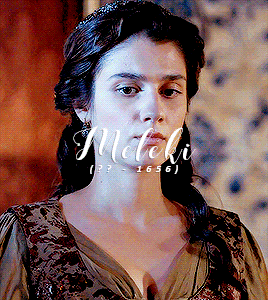



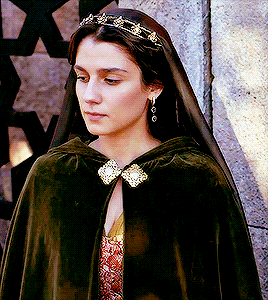

(OTTOMAN) WOMEN’S HISTORY MEME | 5 harem servants: Meleki Hatun
Meleki was originally a member of Kösem Sultan’s suite. [...] When, however, Turhan began to assert what she saw as her rightful authority, Kösem reportedly planned to depose the young sultan and replace him with another prince, whose mother she believed more tractable. At this point Meleki deserted Kösem and betrayed her plans to Turhan, thus enabling the latter to eliminate her mother-in-law (Kösem was murdered in a palace coup led by Turhan’s chief black eunuch). Meleki became the new valide sultan’s loyal and favored retainer. She was eventually manumitted and married to Şaban Khalife, a former page in the palace training school. The couple established residence in Istanbul, where, as a team, they were ideally suited to act as channels of information and intercessors on behalf of individuals with petitions for the palace. Şaban received male petitioners, Meleki female petitioners; Şaban exploited contacts he had formed while serving within the palace, while Meleki exploited her relationship with Turhan Sultan. The political influence of the couple grew to such a point that they lost their lives in 1656 when troops stationed in Istanbul rebelled against alleged abuses in government. — Leslie Peirce, The Imperial Harem: Women and Sovreignty in the Ottoman Empire
152 notes
·
View notes
Photo

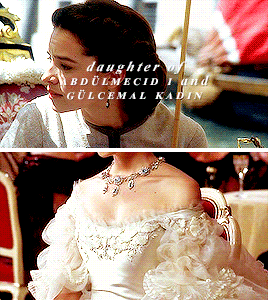




(OTTOMAN) WOMEN’S HISTORY MEME | 5 princesses: Refia Sultan, daughter of Abdülmecid I
In addition to all this benevolence and generosity, Refia Sultan also appears before us for her extravagance. The princess was a person who loved luxury. In the 19th century and especially during the reign of Sultan Abdülmecid, it was almost a tradition for the women of the palace to spend more than their income. Refia Sultan was also raised in this period and was influenced by the passion for shopping and fashion of the other women in the palace. In fact, this was the result and necessity of a new lifestyle similar to those in the West. As a matter of fact, Refia Sultan ordered her carriage and harnesses from Paris, and ordered her clothing needs from the famous French shops of Beyoğlu. French brands were preferred for shopping under the influence of the French style. Refia Sultan had Abdullah Fréres and Vasilaki Kargopoulo, who were the official photographers of the palace and the sultan at that time, take pictures; she has had large and small charcoal and painted pictures made. The princess paid considerable sums for these as well. — Arif Kolay, Osmanlı Saray Hayatından Bir Kesit: Ali Akyıldız ve Mümin ve Müsrif Bir Padişah Kızı Refia Sultan
242 notes
·
View notes
Photo






(OTTOMAN) WOMEN’S HISTORY MEME | 5 harem servants: Canfeda Hatun
The Circassian Canfeda hatun was the housekeeper of the harem and responsible for the training of the women who lived there; she had been an ally of sultan Murad's strong-willed mother, Nur Banu, whose control of the harem she assumed on the latter's death. Until 1595, when she was dismissed by the new sultan Mehmed III, she frequently contacted the Venetians in order to obtain commodities for the harem. She was not in favour with the new sultan since she had chosen to protect the second son of Murad III, prince Mustafa (1578-1595), who was killed with his eighteen brothers on the eve of Mehmed's accession. Canfeda had at least two brothers: Mahmud paşa, who was beylerbeyi of Halep in 1594, and Divane Ibrahim paşa whom she always protected. When Canfeda lost her power her two brothers lost their lives — Maria Pia Pedani, Safiye's Hoursehold and Venetian Diplomacy
178 notes
·
View notes
Photo






(OTTOMAN) WOMEN’S HISTORY MEME | 5 valide sultans: Ayşe Hafsa
Beloved within the palace as well as outside of it, “torrents of tears . . . poured forth when people learned of Hafsa’s death.” Selim’s death had rendered her legally free, and she became the first in a string of powerful mothers who governed alongside their sultan sons. For more than forty years—from her first administrative responsibilities in Trabzon in the 1490s to her death in Istanbul—Hafsa played a vital role in the governance of the empire. She was described as “the mother of the monarch, refuge of the world, the great woman whose whole work was piety, the [pure] woman whose every thought was good.” — Alan Mikhail, God's Shadow; Sultan Selim, His Ottoman Empire, and the Making of the Modern World
377 notes
·
View notes
Photo






(OTTOMAN) WOMEN’S HISTORY MEME | 5 Kadınefendis: Şayan Kadın, consort of Murad V
The Third Consort, Şayan, was one of those beauties one encounters but rarely. Her exquisite blue eyes, adorning her rose-pink face, made her a marvel in the art of feminine loveliness. After our master died she remained in Çırağan Palace even though everyone else had left. — Douglas Scott Brookes, The Concubine, the Princess, the Teacher: Voices from the Ottoman Harem
130 notes
·
View notes
Photo
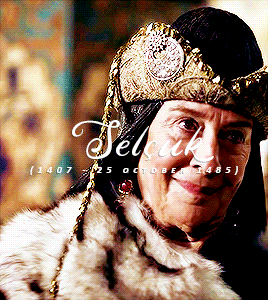

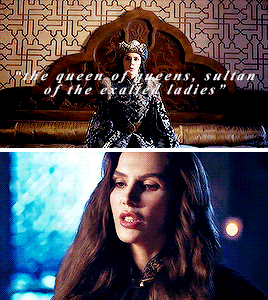
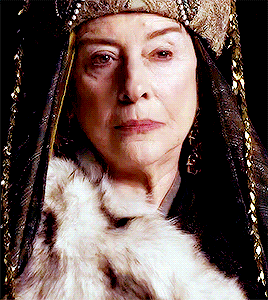

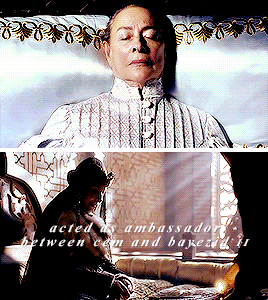
(OTTOMAN) WOMEN’S HISTORY MEME | 5 princesses: Selçuk Hatun, daughter of Mehmed I
"[Selçuk Hatun] became a widow after [Karaca Paşa] was martyred in the war of Varna. She settled in Bursa and spent the last years of her life doing good deeds and praying. Fatih Sultan Mehmed assigned many villages and farms to his beloved aunt. Selçuk Sultan led a comfortable life thanks to the allocations and assignments made to her." — Çağatay Uluçay, Harem'den Mektuplar
165 notes
·
View notes
Photo






(OTTOMAN) WOMEN’S HISTORY MEME| 5 harem servants: Raziye Hatun
Raziye hatun was one of Murad's female companions (musahibe) and maintained a high rank until her death on 26 June 1597, holding the charges of kalfa and vekilharc in the harem hierarchy. She gained Nur Banu's favour in Manisa, where the sultana had accomanied her son Murad. [...] For a certain period Raziye was also protected by the mother of one of Mehmed III's sons, prince Selim (1580-1597); she had presented the young woman to the sultan and for this reason the prince's mother treated Raziye hatun as her own parent. — Maria Pia Pedani, Safiye's Household and Venetian Diplomacy
127 notes
·
View notes
Photo




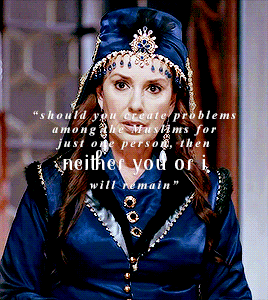
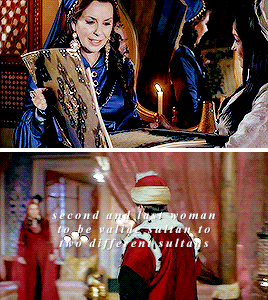
(OTTOMAN) WOMEN’S HISTORY MEME | 5 valide sultans: Emetullah Rabîa Gülnûş
"... limiting the influence of the valide sultans on the workings of the imperial court and Ottoman internal and international politics to the era of "the sultanate of women" does injustice to historical reality. Shared patterns tied Gülnûş's career to a tradition of queen mothers that had existed since antiquity, thus well before the Ottoman period itself. The women sought to promote their own interests and those of their sons, but also devoted themselves to the maintenance of order and the well-being of dynasty and empire. In the case of Gülnûş Sultan, much of her activity served the best interests of the Ottoman sultan and the state as a whole. Her advisory, mediatory, and negotiating activity at the imperial court, and her investments, both in the army and charitable works, contributed to the prestige of the dynasty as well as the public good. Her comment during the 1703 revolt—"if fighting breaks out within the ummah of Muhammad, neither I nor you will remain"—reflects a recognition on her part of the relationship of public attitudes, the fortunes of the dynasty, and her own standing at court." — Betul Ipsirli Argit, A Queen Mother and the Ottoman Imperial Harem: Rabia Gülnuş Emetullah Valide Sultan (1640-1715)
180 notes
·
View notes
Photo






(OTTOMAN) WOMEN'S HISTORY MEME | 5 royal mothers: Tîr-i Müjgân, mother of Abdülhamid II
My grandmother, the lady Tîrimüjgân Kadınefendi, gave birth to two princes and one princess. Her first child was Princess Naime, who died of smallpox at the age of two and a half in March 1843. Papa was her second child, while her third was Prince Mehmed Âbid, who died in May 1848 around the age of one month. Papa named my sister Princess Naime and my brother Prince Mehmed Âbid after these siblings of his. The Imperial Consort Tîrimüjgân was known among the long-serving kalfas at the palace for her refinement, her politeness, and her beauty. Those who knew her said she had hazel green eyes, quite long, light brown hair, white, translucent skin, and a slender figure, thin waist, and lovely hands and feet. The old Circassian kalfas at the palace—who came from the same region as she—said she belonged to the Shapsug clan, and Papa used to say about the Shapsug girls, “My mother’s people.” — Ayşe Osmanoğlu, My father, Sultan Abdülhamid
246 notes
·
View notes
Photo






(OTTOMAN) WOMEN’S HISTORY MEME | 5 harem servants: Nevzad Kalfa (then Hanım)
In earlier days this lady had served in the entourage of my student princesses and had taken the same classes and training as they, but then she was one of the kalfas who went over to Sultan Vahideddin’s palace. A short while later she entered the ranks of the Sultan’s ladies. -- Safiye Ünüvar, Saray Hatiralarim
132 notes
·
View notes
Photo






(OTTOMAN) WOMEN’S HISTORY MEME | 5 harem servants: Şekerpare Hatun
Şekerpare Hatun was one of Kösem Sultan’s female slaves, and later she became a companion of Sultan Ibrahim. Şekerpare had great influence in the harem and attained great wealth, apparently through bribery. A dispute arose between her and Kösem Sultan due to this bribery, and finally Şekerpare was exiled to the island of Chios in May 1648. — Betül Ipsirli Argit, Life after the Harem: Female Palace Slaves, Patronage and the Imperial Ottoman Court
143 notes
·
View notes